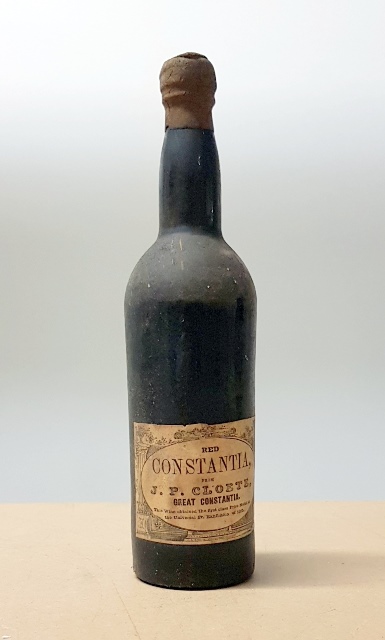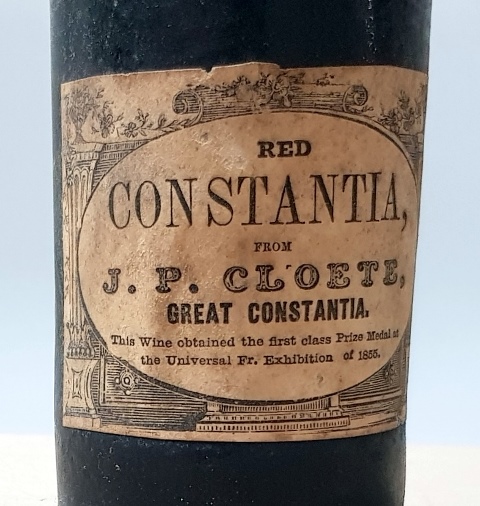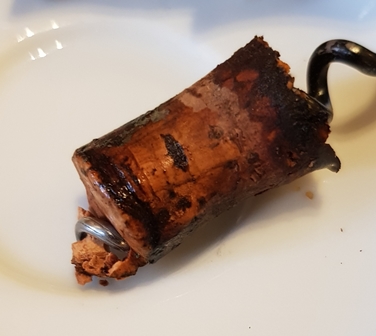This dinner with winemakers who are my friends is one of the summits of my year in the world of wine.
This is the 18th year that I organize a dinner of winemakers known as the “dinner of friends of Bipin Desai” because it was he who had the idea. He is a great collector of wines of Indian origin living in California, organizer of fantastic vertical tastings of the greatest estates, and also professor of nuclear physics at Berkeley. My task was to collect, register, receive the wines brought by the winemakers and develop the menu, thanks to Ghislain, very competent sommelier, with the chef of restaurant Laurent, Alain Pégouret.
There are ten of us: Frédéric Barnier (Louis Jadot), Philippe Foreau (Clos Naudin), Marc Hugel (Maison Hugel), Jean-Luc Pépin (Comte Georges de Vogüé domain), Rodolphe Péters (Pierre Péters champagnes), Charles Philipponnat (Champagnes Philipponnat), Pierre Trimbach (Maison Trimbach ), Aubert de Villaine (Domaine de la Romanée Conti), Bipin Desai and me.
At 16:30 I open the bottles which, with few exceptions, are relatively young. I find that almost all corks are very tight in the necks, requiring great effort to remove them. Is it weather-related, I do not know. All smells are encouraging, and some even magical.
The aperitif is taken in the beautiful rotunda of the entrance of the restaurant with Champagne Pierre Péters Cuvée Les Chétillons magnum 2002 disgorged in 2012. I had it opened by Ghislain an hour and a half before the aperitif and despite that the champagne seems to me closed, a little tight. But it needed the delicious appetizers to reveal it. These appetizers are precise, without fuss and very effective to expand the champagne. Rodolphe Péters says that this 16-year-old champagne is starting to take its personality and the scale it must have. It’s a big balnc de blancs of Mesnil-sur-Oger, the mecca of blanc de blancs.
We sit down to table. The menu created by Alain Pégouret is: Scallops marinated with a mushroom of olive oil lemon caviar and red pepper of Pondicherry, jelly of cucumber and mint, tortilla guacamole / sweet onion confit and caramelized, light cream of apple ’ Charlotte ', Alba white truffle, Parmesan cheese and flowing yellow / Veal sweetbreads caramelized with balsamic apple vinegar, chips and chestnut muslin, chanterelles and bacon au jus / Rack of lamb of Lozère cooked on a marinière, « shots and creamy artichokes and crystalline / Queen apple pudding, blackcurrant yoghurt, ice cream with beer / Financiers.
The dish of Saint-Jacques is aerial. It is accompanied by a champagne and a white wine. Pierre Trimbach thinks that the Riesling makes a little shade on Philipponnat Champagne Clos des Goisses 1996 disgorged in 2010, but we are many to think that both fertilize each other. There are many bridges that are created between champagne and the Riesling Cuvée Frédéric Emile Trimbach magnum 1990. The champagne is equally made of Pinot Noir and Chardonnay and has a beautiful personality. He is alive. Riesling has an incredible scent. This perfume is conquering. The wine achieves this miracle of appearing warrior, invader, but also of great elegance. Riesling seduces me with its extreme precision. It’s fresh. It is a huge wine and Philippe Foreau notes that the combination is realised with the mint notes of the very fresh dish. I think it’s the cucumber dice that create the bridge between the two, champagne and wine. We are delighted with this beautiful association.
The onion is superb and the truffle of Alba releases haunting perfumes. The dish is accompanied by two very disparate wines, whereas they are of the same year. The Bâtard-Montrachet Grand Cru Louis Jadot Magnum 1999 is like the Riesling a warrior wine. When it is served, it shows its muscles, with a heady perfume. But as soon as the wine is refreshed in the glass, the subtleties appear. Power and elegance are his two strengths.
The White Burgundy Domaine Georges de Vogüé 1999 is in fact a White Musigny which by humility erases since 1991 its name as long as the replanted vines are not old enough. It reclaims its appellation from the 2015 vintage. This wine is more discreet than the Batard and is of rare elegance. He suggests more than he affirms and shows his refinement. The agreement is very interesting, Batard successfully facing the white truffle while the wine of Vogüé is measured gently with the delicious onions and egg very justified for the consistency of the dish.
Aubert de Villaine, who has read the menu, is worried about the appearance of a sweet wine that risks harming the two red wines that will follow. Philippe Foreau says his Vouvray semi-dry Clos Naudin 2005 will have no negative effect on the reds. I ask in the kitchen if we can pass the dish red before the planned dish, but the service is launched also I open a second bottle of Clos des Goisses 1996, we drink after the Loire wine and before the red. The Loire wine is quite simple at first contact, but it is like a Bugatti that needs a few minutes before the engine with innumerable cylinders begins to sing its symphony. The agreement that Philippe Foreau had suggested to me, with sweetbreads, is superb. The subtle wine is discreet, a message of courtly love, and if it is sweet, it keeps the mouth fresh. Philippe was right, the palate is not marked and we could have gone to red wines, but it is more prudent not to challenge the devil.
The bottle of Champagne Philipponnat Clos des Goisses 1996 disgorged in 2010 is fundamentally different from the first while they come from the same batch. Philippe Foreau suggests that the second bottle would be more dosed than the first and Charles Philipponnat is categorical, it is impossible that the dosage is different. The taste of this champagne is richer, more powerful, with strong evocations of almonds and hazelnuts. Personally I preferred the first bottle served, but opinions are shared.
Our palates are calibrated and arrive the rack of lamb, chosen not to hit the two big reds. At the opening at 17 hours, the Musigny Vieilles Vignes Domaine George Vogüé 1970 had conquered me by its perfume of a rare elegance, all in suggestion. But the wine I drink now is a little tired, more evolved than it should be. But he will make a fantastic comeback, come together, will lose his veils of excessive maturity to become gallant. It is a very charming wine. He is very fine, even in this year of little renown.
The Richebourg Domaine de la Romanée Conti 1964 has a very young fruit. He is solid and robust and only gradually delivers the complexities of the Domaine. It is a wine with a wide range of flavors, that it declines elegantly. Neither wine harms the other and we enjoy two Burgundian expressions of great talent. As we drink big thirst I ask that we do not serve cheese because there will not be enough wine. Fortuitously no cheese was listed on our menus while it was planned. Despite some expressed wishes, we go directly to dessert.
The Late Harvest Riesling Sélection Personnelle Jean Hugel 1935 is announced by Marc Hugel as being very dry and although it is late harvested, it is actually very dry. This wine is a marvel of subtlety. We could have a meal with this wine alone, to explore its exciting ability to marry the gastronomy. This wine is a wine of meditation. It gives me a very strong emotion.
The Vouvray Goutte d’Or moelleux Clos Naudin 1947 with the extremely amber color is the reverse of the previous one. It is absolutely fantastic in very strong notes where Philippe Foreau finds evocations of an incredible imagination, like the horse that comes back to the stable, whereas I find under its very roasted message, almost molasses, notes of tea. This wine is a thundering prodigy of gourmet sweets. You can go from one wine to another, each offering admirable sensations.
I had told at the beginning of the meal that thanks to Etienne Hugel, brother of Marc Hugel, I had the chance to drink a Constantia of South Africa of 1791 belonging to Jean Hugel. The presence of Marc made me want to open for my friends winemakers a Red Constantia J. P. Cloete Great Constantia South Africa around 1860, the wine of kings, emperors and tsars, the most mythical wine that is. At the opening, I was paralyzed by the perfection of its perfume. This wine is my Grail, my search, my love. He is rich, peppery, with extreme acidity which supports the wine, and he has held the 158 years of his life without getting a wrinkle. Its length is infinite and its aromatic persistence is too. It is fat / dry. I enjoy this perfect wine and am particularly happy that my friends love it, because who better than they could appreciate these eternal flavors?
In the pretty dining room of the Laurent restaurant we had a nice table but the shape made it very difficult to have common conversations. Three or four small discussion groups were formed except when it was necessary to address a general message and the opposite wings could not speak to each other. So, when we got up, the conversations continued very late, as everyone was happy with this friendship dinner.
The chef made an inspired cuisine, of great delicacy and without parasitic tastes that hit the wines. The service of the dishes and wines was very attentive and intelligent. We left happy to have shared a great moment of friendship with wines that are the most beautiful expressions of prestigious domains, represented by those who embody them. Everyone has only one desire, it is to come back next year.



